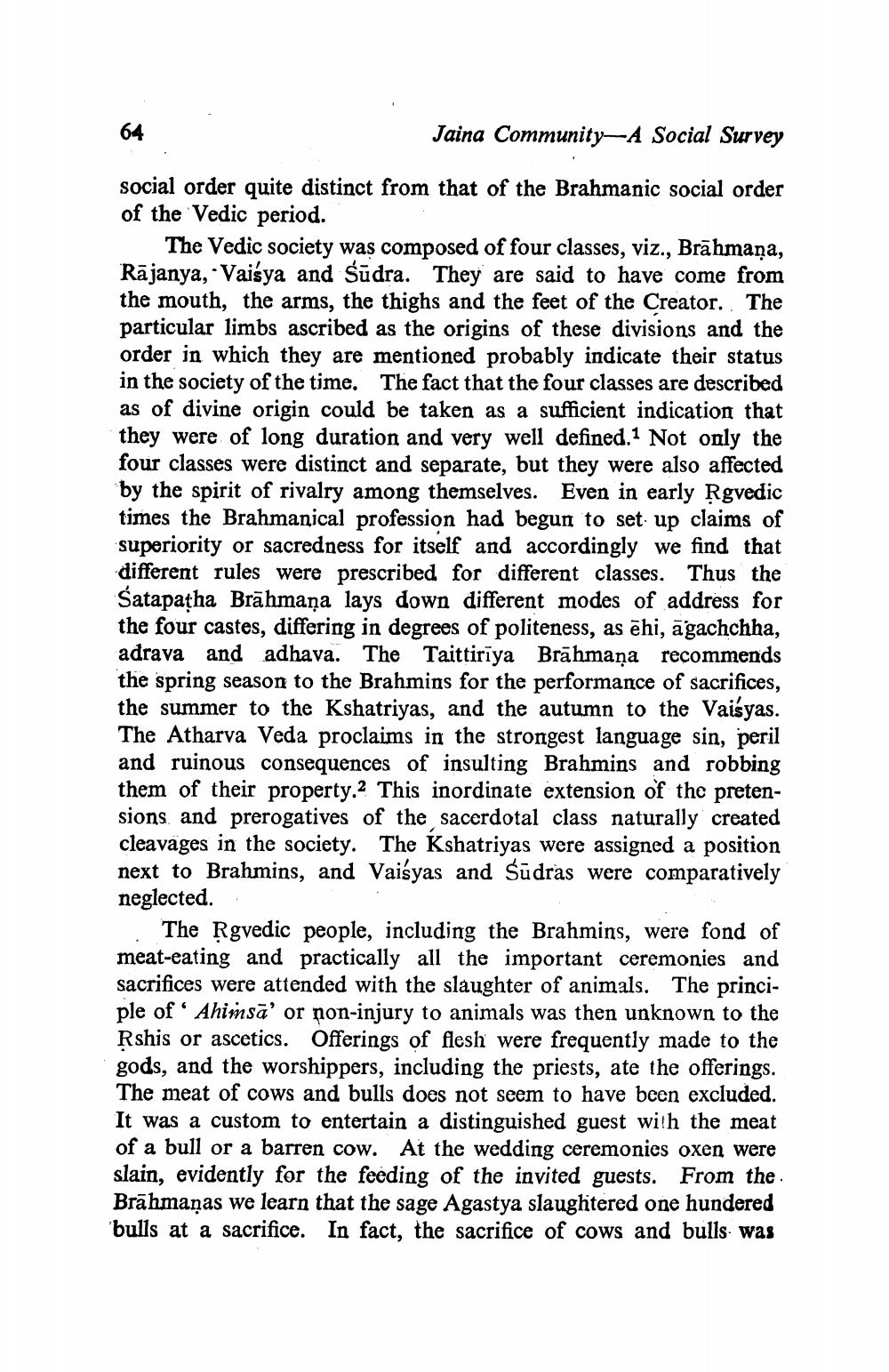________________
Jaina Community- A Social Survey
social order quite distinct from that of the Brahmanic social order of the Vedic period.
The Vedic society was composed of four classes, viz., Brāhmaṇa, Rājanya, "Vaisya and Sūdra. They are said to have come from the mouth, the arms, the thighs and the feet of the Creator. The particular limbs ascribed as the origins of these divisions and the order in which they are mentioned probably indicate their status in the society of the time. The fact that the four classes are described as of divine origin could be taken as a sufficient indication that they were of long duration and very well defined.1 Not only the four classes were distinct and separate, but they were also affected by the spirit of rivalry among themselves. Even in early Rgvedic times the Brahmanical profession had begun to set up claims of superiority or sacredness for itself and accordingly we find that different rules were prescribed for different classes. Thus the Śatapatha Brāhmaṇa lays down different modes of address for the four castes, differing in degrees of politeness, as ēhi, agachchha, adrava and adhava. The Taittirīya Brāhmaṇa recommends the spring season to the Brahmins for the performance of sacrifices, the summer to the Kshatriyas, and the autumn to the Vaisyas. The Atharva Veda proclaims in the strongest language sin, peril and ruinous consequences of insulting Brahmins and robbing them of their property. This inordinate extension of the pretensions and prerogatives of the sacerdotal class naturally created cleavages in the society. The Kshatriyas were assigned a position next to Brahmins, and Vaisyas and Sūdras were comparatively neglected.
The Rgvedic people, including the Brahmins, were fond of meat-eating and practically all the important ceremonies and sacrifices were attended with the slaughter of animals. The principle of ' Ahimsā' or pon-injury to animals was then unknown to the Rshis or ascetics. Offerings of flesh were frequently made to the gods, and the worshippers, including the priests, ate the offerings. The meat of cows and bulls does not seem to have been excluded. It was a custom to entertain a distinguished guest with the meat of a bull or a barren cow. At the wedding ceremonies oxen were slain, evidently for the feeding of the invited guests. From the Brāhmaṇas we learn that the sage Agastya slaughtered one hundered bulls at a sacrifice. In fact, the sacrifice of cows and bulls. was




